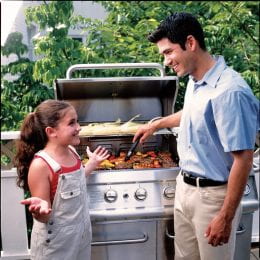
Photo: USDA
Thirty years ago, a foodborne illness outbreak of E. coli O157:H7 contaminated ground beef, at Jack in the Box restaurants, changed the safety of food forever. Lives were lost, lives were changed, and the emphasis on handling food safely grew exponentially. Besides meat products, other foods have been linked to foodborne illness such as leafy greens, eggs, deli meats and raw flour.
Prevention is a key strategy to reduce food safety problems. More training and education is key to mitigating foodborne illness from occurring. From handling food safely at home, to food service workers, to food manufacturers, changes such as monitoring temperatures, better cleaning practices, how food is handled on the farm and more has changed the food industry. Every person has a role in keeping food safe.
As we move into late spring and summer months, keep food safety in mind for your outdoor events and gatherings. When packing for a picnic or cookout, always pack a food thermometer. These three temperatures are key to safely cooked meat and poultry.
- Steaks, roasts, chops—145°F
- Ground meat such as beef, pork, lamb—160°F
- All poultry—165°F
For more information on safe food handling, see At-Home Safe Food Handling: It’s in Your Hands.